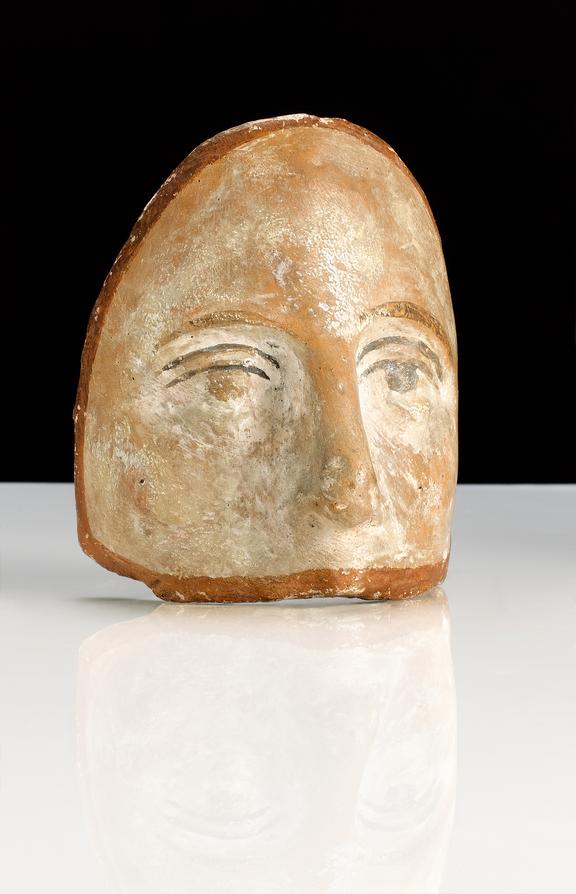

Roman votive terracotta face.
- Made:
- 200 BCE-200 CE in Roman Empire




Votive face, terracotta, painted features, probably Roman, 200CB-200AD, possibly with recent modification
Made from terracotta, this votive offering is in the shape of a face with painted features. Votive offerings were given to Greek and Roman healing gods such as Asklepios as a request or thanks for a cure. Votives are usually in the shape of the body part afflicted and give some indication as to what the person was experiencing. In this case, the face-shaped votive may indicate a skin condition. Most votives are made from terracotta but some are made from bronze, indicating a wealthy owner.
Details
- Category:
- Classical & Medieval Medicine
- Collection:
- Sir Henry Wellcome's Museum Collection
- Object Number:
- A634923
- Materials:
- terracotta
- Measurements:
-
overall: 124 mm x 109 mm x 70 mm, .355 kg
- type:
- votive face
- credit:
- Wellcome Trust (Purchased from Stevens)




